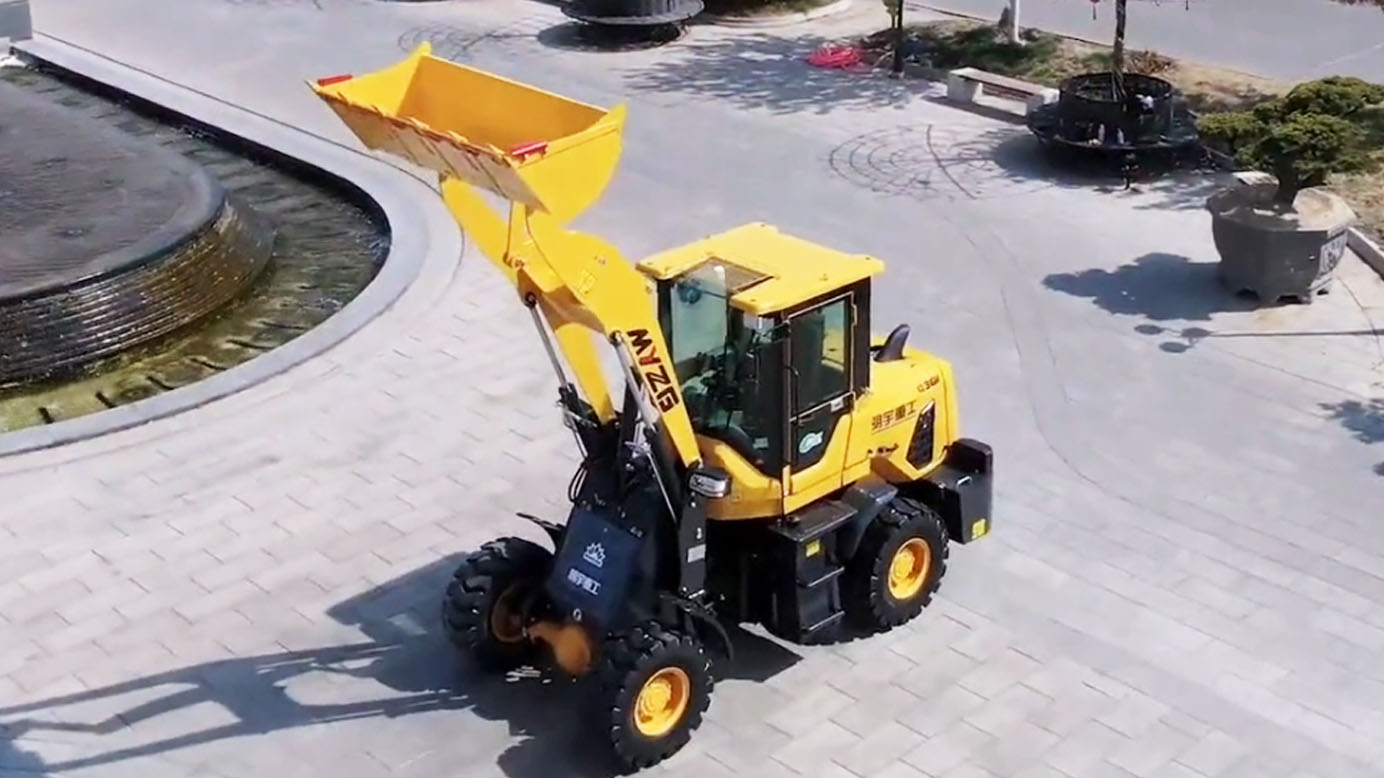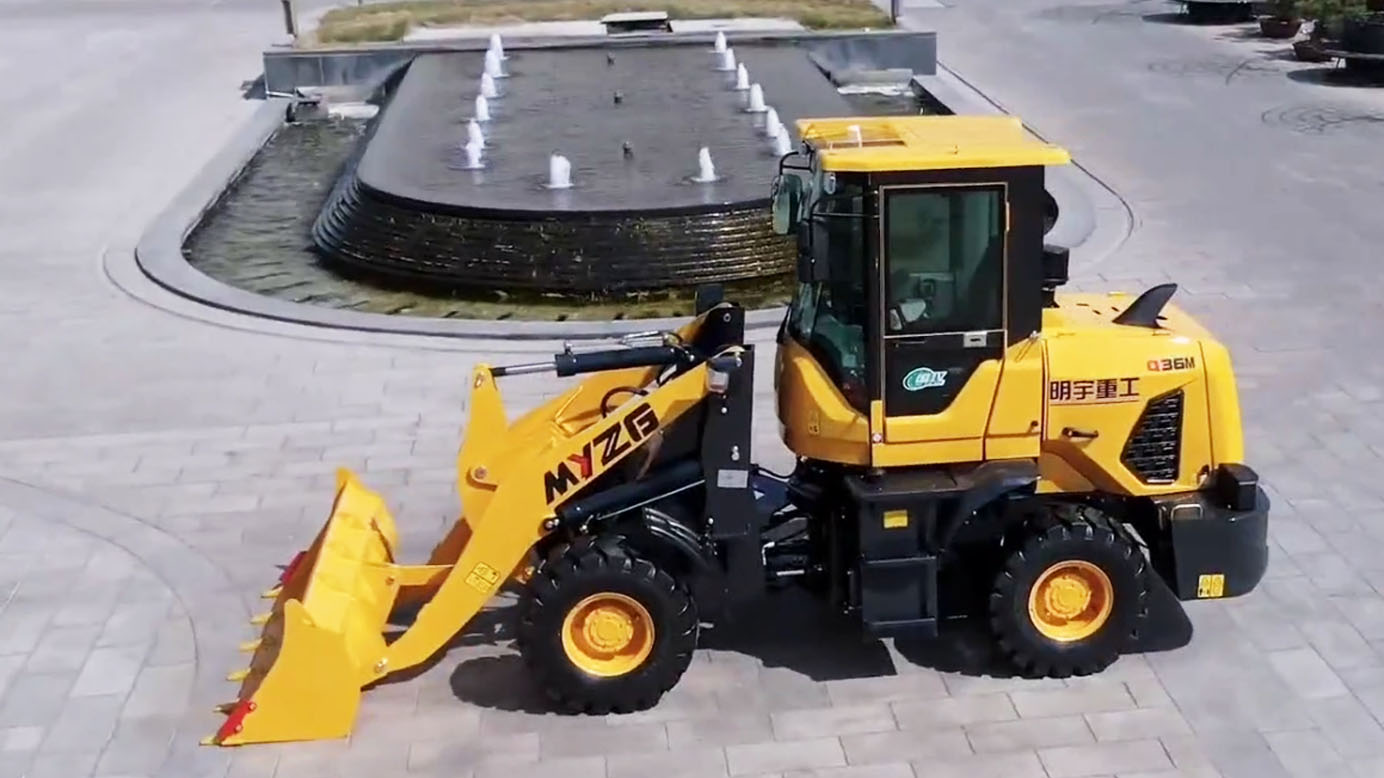I. Introduction
Wheel loaders are the workhorses of heavy industries, from sprawling construction sites to the depths of mining operations. Their ability to move massive quantities of materials efficiently is indispensable. However, this power comes at a cost, primarily in the form of substantial fuel consumption. With rising fuel prices and increasing environmental concerns, operators are constantly seeking ways to optimize efficiency and reduce operational expenses. While engine performance and hydraulic systems often take center stage, the humble tire plays a surprisingly significant role in fuel economy. It's more than just a means of locomotion; modern tire technology is evolving rapidly, incorporating advanced materials and designs that directly impact rolling resistance and, consequently, fuel consumption. This article will delve into the latest advancements in wheel loader tire technology, focusing on how these innovations are driving fuel efficiency and transforming the operational landscape.
II. Understanding the Fundamentals
A. Rolling Resistance:
Rolling resistance is the force opposing the motion of a tire as it rolls on a surface. It's a critical factor affecting fuel consumption. As a tire deforms under load, it expends energy, which is lost as heat. This energy loss translates directly into increased fuel usage. Factors contributing to rolling resistance include tire deformation, the materials used in its construction, and the interaction between the tire and the ground surface.
B. Tire Construction and Materials:
Radial tires, with their plies running radially from bead to bead, generally offer lower rolling resistance compared to bias-ply tires, where plies crisscross at angles. Advanced rubber compounds, incorporating silica and other specialized additives, are designed to minimize hysteresis—the energy loss due to internal friction. Tread designs also play a crucial role. Optimized patterns can reduce deformation and improve energy efficiency while maintaining necessary traction.
C. Tire Pressure:
Maintaining proper tire pressure is paramount for fuel efficiency. Underinflation increases the tire's contact patch with the ground, leading to greater deformation and higher rolling resistance. Conversely, overinflation reduces the contact patch, potentially compromising traction and increasing wear. Optimal tire pressure ensures minimal deformation and efficient energy transfer.
III. Key Technological Advancements
A. Advanced Tire Compounds:
Modern tire manufacturers are developing sophisticated rubber formulations that minimize heat buildup and reduce hysteresis. These compounds often incorporate synthetic materials and specialized fillers that enhance the tire's ability to flex and recover without excessive energy loss. For example, the use of silica in rubber compounds has been shown to significantly reduce rolling resistance compared to traditional carbon black fillers.
B. Optimized Tread Designs:
Computer-aided design (CAD) and finite element analysis (FEA) are now integral to tire development. These tools allow engineers to simulate tire performance under various operating conditions and optimize tread patterns for minimal rolling resistance while maintaining traction. Advanced tread designs feature optimized groove patterns, sipe arrangements, and block shapes that reduce deformation and improve energy efficiency.
C. Tire Pressure Monitoring Systems (TPMS):
TPMS utilizes sensors to continuously monitor tire pressure and provide real-time data to the operator. This technology helps maintain optimal inflation levels, preventing underinflation and its associated fuel penalties. Advanced TPMS systems can integrate with machine management software, providing data analytics that enable proactive tire maintenance and fuel optimization.
D. Tire structure innovations:
Innovations in tire carcass construction play a critical role in minimizing rolling resistance. The carcass, the tire's structural framework, influences its flexibility and deformation. New reinforcing materials, such as high-strength steel belts and advanced textile cords, are used to enhance carcass integrity and reduce energy loss. Additionally, optimized carcass profiles contribute to uniform load distribution and reduced deformation.
IV. The Impact on Fuel Efficiency and Operational Costs (Approx. 400 words)
A. Quantifying Fuel Savings:
Real-world studies have demonstrated significant fuel savings from implementing modern tire technologies. For example, switching from bias-ply to radial tires with advanced compounds can reduce fuel consumption by several percentage points. Coupled with proper inflation and TPMS, these savings can translate into substantial cost reductions over the machine's lifespan. Furthermore, the reduced fuel consumption directly lowers CO2 emissions, contributing to environmental sustainability.
B. Extending Tire Lifespan:
The reduced heat buildup and optimized tread designs of modern tires contribute to longer tire life. By minimizing wear and tear, these technologies reduce the frequency of tire replacements, lowering operational costs. Additionally, proper tire maintenance, facilitated by TPMS, helps prevent premature tire failure and extends the overall lifespan.
C. Overall Operational Benefits:
Improved tire performance translates into increased productivity and operator comfort. Lower rolling resistance reduces the engine's workload, allowing for smoother operation and faster cycle times. Enhanced traction and stability improve machine handling and operator control. Furthermore, reduced tire-related downtime minimizes disruptions to operations, maximizing machine utilization.
V. The Future of Wheel Loader Tire Technology
A. Emerging Trends:
The future of wheel loader tire technology is poised for significant advancements. Smart tires, equipped with embedded sensors, will provide real-time data on tire temperature, pressure, and wear, enabling predictive maintenance and further fuel optimization. Airless tire technology, currently under development, holds the potential to eliminate flat tires and reduce maintenance requirements. Additionally, the industry is increasingly focused on sustainable tire manufacturing, utilizing recycled materials and eco-friendly production processes.
B. The Role of Data and Connectivity:
Data analytics and connectivity will play a pivotal role in driving further improvements in tire performance and fuel efficiency. Integrating tire data with overall machine management systems will enable operators to optimize tire pressure, monitor wear patterns, and predict maintenance needs. This data-driven approach will lead to more efficient tire management and reduced operational costs.
C. Conclusion:
Modern wheel loader tire technology is revolutionizing the heavy equipment industry, offering significant improvements in fuel efficiency, operational costs, and environmental sustainability. Advanced materials, optimized designs, and intelligent monitoring systems are driving this transformation. As the industry continues to evolve, staying informed about the latest advancements in tire technology will be crucial for operators seeking to maximize efficiency and minimize their environmental footprint. The future of wheel loader tires lies in smart, sustainable, and high-performance solutions that will redefine the standards of operational excellence.
Post time:Mar.27.2025



